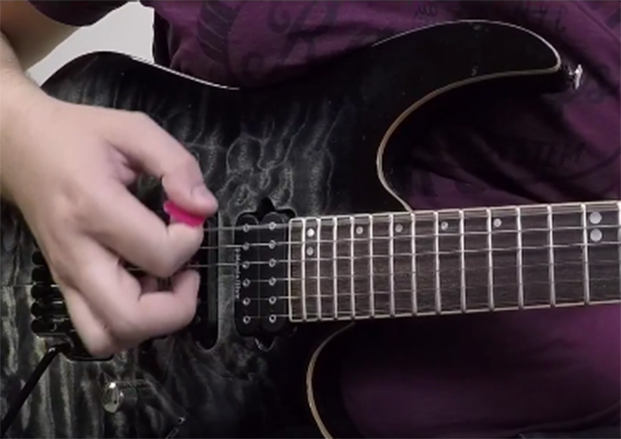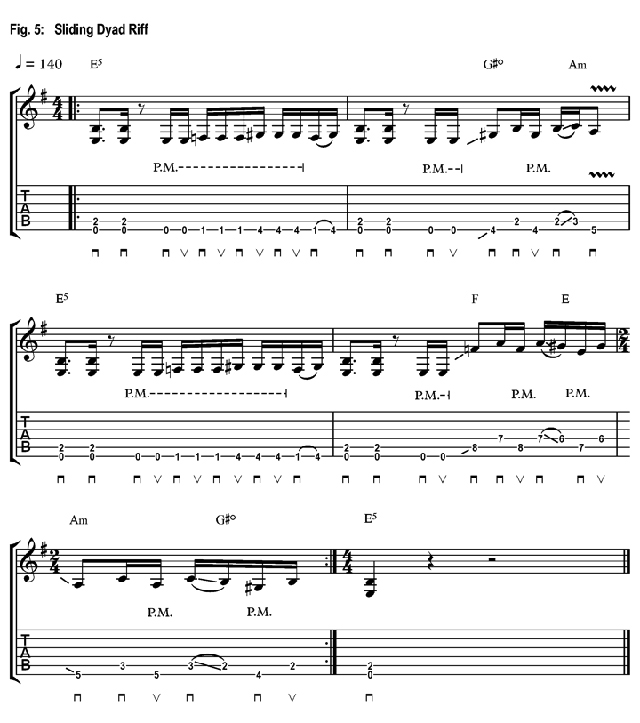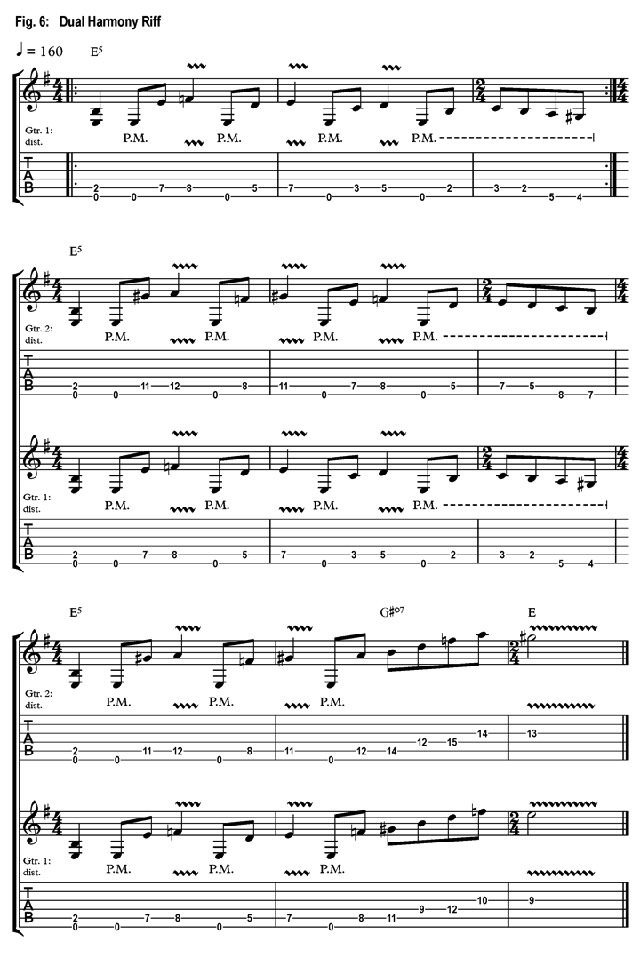Building Metal Riffs with the Phrygian Dominant Scale
Learn how to use the Phrygian Dominant scale to create musically intriguing riffs.

There comes a time in a guitarist’s journey when the usual Minor Pentatonic and Natural Minor/Aeolian scales begin to sound stale and boring.
The next logical step is to explore the sounds you can make with more interesting scales, for example, the Harmonic Minor.
Most of us will begin to experiment with these scales in a soloing context, typically by improvising, which is a great way to explore a scale.
However, in this lesson I want to show you an alternative approach that you may not have thought about.
Just as you can write some great licks using exotic scales, I’ll demonstrate how you can also use them to write some really interesting heavy metal riffs.
Bands such as Lamb Of God, Dream Theater and Symphony X use this approach to great effect.
In the following examples, I’ll be using the E Phrygian Dominant scale to write two heavy metal riffs, each with a different approach and style.
This scale has an Eastern sound and is perfect for metal, with its flat second, major third and flat seventh intervals.
Figure 1 shows a one-octave A Harmonic Minor scale (ABCDEFG#A) on the A string of the guitar.
By starting on the fifth note, E, rather than the A, you’ll end up with the fifth mode of A Harmonic Minor, which is the E Phrygian Dominant scale (EFG#ABCDE).
Figure 2 shows the E Phrygian Dominant scale on the low E string:
Since both of these scales contain the same notes, think of the last two exercises as a map of the E Phrygian Dominant scale across the fifth and sixth strings.
By harmonizing this scale in thirds, you’ll end up with some useful two-note chords (called dyads) to aid you in building heavy metal riffs.
The dyads in the Phrygian Dominant scale are powerful, as they contain the flat second, major third and flat seventh intervals, giving the scale its characteristic Eastern sound.
In Figure 3, I’ve harmonized the E Phrygian Dominant scale in thirds, with the root notes on the E string.
Similarly, Figure 4 shows the harmonized root notes on the A string. Due to issues with the tuning, I’ve made the first dyad in each group a regular power chord:
By incorporating these dyads into your riffs, you can imply the sound of the following chords – E Major, F Major, G# Diminished, A Minor, B Diminished, C Major and D Minor.
In Figure 5, I’ve created a riff that implies the sound of the G# Diminished and A Minor chords by sliding between the dyads in bar 2 (see Figures 3 and 4).
Later, I develop this concept further, implying the F Major and E Major dyads in bar 4:

Figure 6 uses a dual guitar harmony approach. A second guitar part harmonizes the main riff in thirds, allowing the Phrygian Dominant sound to be heard.
I’ve ended the riff by harmonizing a G# Diminished 7 arpeggio in the same way.

I hope this lesson has given you some inspiration to write your own killer riffs.
The same approach works particularly well with the modes of the Major scale. Try it with the Lydian and Mixolydian modes and you’ll get some interesting tonalities.
Simon Revill is the author of the free eBook Metal Rhythm Guitar: Starter Guide and runs the Metal Guitar Lessons Facebook group. Simon teaches privately in the UK, globally via Skype, and runs a custom music transcription service from his home. Visit simonrevillmusic.com to find out more.
Get The Pick Newsletter
All the latest guitar news, interviews, lessons, reviews, deals and more, direct to your inbox!







![Joe Bonamassa [left] wears a deep blue suit and polka-dotted shirt and plays his green refin Strat; the late Irish blues legend Rory Gallagher [right] screams and inflicts some punishment on his heavily worn number one Stratocaster.](https://cdn.mos.cms.futurecdn.net/cw28h7UBcTVfTLs7p7eiLe.jpg)


